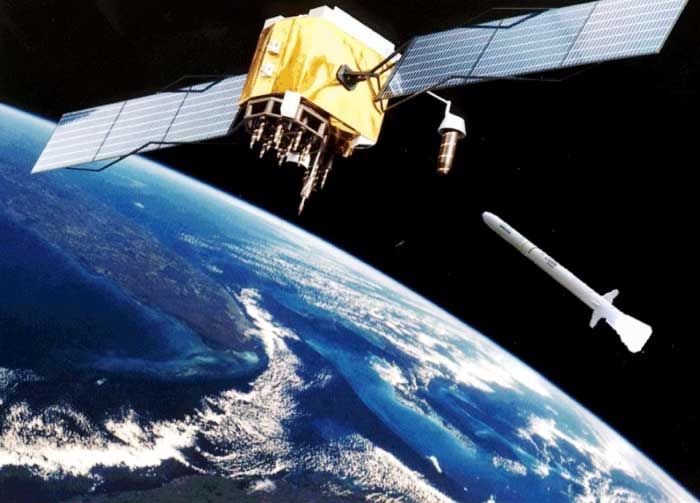
On January 11, 2007, China conducted its first anti-satellite missile test (ASAT) by destroying a satellite with a mass of 750 kg at an altitude of 865 km. There was no official announcement by China about this test, but it claimed that it had informed US and Japan in advance. However, the world came to know about it, since the US Space Surveillance Network routinely tracks debris in space. This test has created significant amount of debris (more than 3000 big pieces) in the space.
China got heavily criticized globally for the conduct of this test. Almost reverse happened in case of India.
On 27 March 2019, India officially announced the successful conduct of an ASAT test at an altitude of 280km. This test created around 300 big pieces of debris and by this time most of them are expected to have got burned (few pieces are known to be have reached higher altitude around 1000 km and are likely to remain for as debris for a long time).
There was not much of criticism for the Indian test at global level, probably since this test has not polluted the outer space much. Also, the Indian policy makers were transparent about their ASAT actions and more importantly many in the world understood the rationale behind India conducting this test.
During last twelve years, China has conducted few more tests (mostly covertly) to hone their skills in the arena of counter-space technologies. However, they have refrained from conducting any test which could create space debris. Since 2007 China has made significant amount of progress with their space programme however, they were not able be ‘constructively’ build on the success of their 2007 ASAT test. Possibly they were deterred by the possible global backlash and in all probability there was a lack of conceptual clarity about future ASAT policies.
It is important for India to ensure that their ASAT experimentation would not wither away. India has no intensions to weaponize space. For all these years ISRO has been able to fulfil (at least, partially) the requirements of Indian Army, Navy and Air Force in the space domain. These requirements essentially involve the demands for communication, navigation and reconnaissance assistance. Modern-day military platforms and weapon systems have significant amount of dependence on the satellites for their operations.
To systematise the increasing requirements from the space system for all three services, for last few years there was a demand for the establishment of a unified Space Command. Recently, India has announced the formation a Defence Space Agency for this purpose.
Essentially, for all these years, for Indian defence forces, the space systems have been the ‘Force Multiplier’. However, now with the conduct of ASAT, India appears to be redefining the limits of space domain for security usage. With the realisation that there could be a direct or an indirect threat to various Indian satellite systems in particular and India’s overall interests in space in general, India decided to undertake an ASAT test. For India, ASAT offers a credible Space Deterrence. Conduct of ASAT test, should only be the first step towards the strategic domain of space by India.
With advantage of the hindsight, it could be argued that, ‘in nuclear domain, India took significant amount of time to separate its military programme from the civilian programme’. This mistake should not be repeated in the space domain. It is important to clearly identify civilian space programme separately and strategic space programme separately. Hence, to maintain the credibility of space deterrence and to ensure further progress, India needs to establish a separate space security architecture.
ISRO’s basic mandate is to make satellite systems available for socioeconomic developments. Over the years ISRO has multiplied the capability manifold. Their basic mandate is to undertake research in the civilian space domain and they should be allowed to do so. A separate agency should run India’s strategic space programme.
There is a need to develop various counter-space capabilities like EMP systems, Lasers, jamming techniques and identification of cyber options. Aspects like satellite hardening technologies and space debris removal techniques require focussed attention. Space planes, satellite swarms and launch on demand (of new satellite systems) services is the requirement of 21st century warfare.
There is a need to develop ability for the human spacecraft to move from one orbit to another (orbit hopping). Network of small satellites would be required to establish a Military Internet. For smooth conduct of all such activities, investments are required to be made towards development of modern communications systems, space meteorology units and establishment of space surveillance networks (for the purpose of space situational awareness or SSA).
The 2019 ASAT test is the first step towards articulation of India’s strategic vision in space. This ‘new normal’ requires an establishment of an additional ecosystem for space domain. It could be incorrect to overburden the existing agencies like ISRO, DRDO or the armed forces. Their services should be used judicially. To cater for strategic needs and for the requirements of Indian Army, Indian Navy and Indian Air Force it is essential to establish a separate military service called Indian Space Force. Such force should not be viewed as an additional bureaucratic system, but a system which would eventually help India to assert its domination in the outer space.




